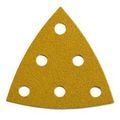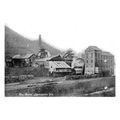Aircraft - Boeing B-17 Flying Fortress - Valentine postcard c.1940s
- Condition : Used
- Dispatch : 2 Days
- Brand : None
- ID# : 183153655
- Quantity : 1 item
- Views : 217
- Location : United Kingdom

- Seller : justthebook (+1703)
- Barcode : None
- Start : Sun 07 Jul 2019 16:24:31 (BST)
- Close : Run Until Sold
- Remain : Run Until Sold
More Listings from This Seller view all
Seller's Description
- Postcard
- Picture / Image: "The Flying Fortress" Boeing B-17 info postcard
- Publisher: Valentines
- Postally used: no
- Stamp: n/a
- Postmark(s): n/a
- Sent to: n/a
- Notes / condition:
Please ask if you need any other information and I will do the best I can to answer.
Image may be low res for illustrative purposes - if you need a higher definition image then please contact me and I may be able to send one. No cards have been trimmed (unless stated).
------------------------------------------------
Postage & Packing:
Postage and packing charge should be showing for your location (contact if not sure).
No additional charges for more than one postcard. You can buy as many postcards from me as you like and you will just pay the fee above once. Please wait for combined invoice. (If buying postcards with other things such as books, please contact or wait for invoice before paying).
Payment Methods:
UK - PayPal, Cheque (from UK bank) or postal order
Outside UK: PayPal ONLY (unless otherwise stated) please. NO non-UK currency checks or money orders (sorry).
NOTE: All postcards are sent in brand new stiffened envelopes which I have bought for the task. These are specially made to protect postcards and you may be able to re-use them. In addition there are other costs to sending so the above charge is not just for the stamp!
I will give a full refund if you are not fully satisfied with the postcard.
----------------------------------------------
Text from the free encyclopedia WIKIPEDIA may appear below to give a little background information (internal links may not work) :
*************
The Boeing B-17 Flying Fortress is a four-engined heavy bomber developed in the 1930s for the United States Army Air Corps (USAAC). Competing against Douglas and Martin for a contract to build 200 bombers, the Boeingentry (prototype Model 299/XB-17) outperformed both competitors and exceeded the air corps' performance specifications. Although Boeing lost the contract (to the Douglas B-18 Bolo) because the prototype crashed, the air corps ordered 13 more B-17s for further evaluation. From its introduction in 1938, the B-17 Flying Fortress evolved through numerous design advances,[6][7] becoming the third-most produced bomber of all time, behind the four-engined B-24 and the multirole, twin-engined Ju 88.
The B-17 was primarily employed by the USAAC in the daylight strategic bombing campaign of World War II against German industrial and military targets. The United States Eighth Air Force, based at many airfields in central and southern England, and the Fifteenth Air Force, based in Italy, complemented the RAF Bomber Command's nighttime area bombing in the Combined Bomber Offensive to help secure air superiority over the cities, factories and battlefields of Western Europe in preparation for the invasion of France in 1944.[8] The B-17 also participated to a lesser extent in the War in the Pacific, early in World War II, where it conducted raids against Japanese shipping and airfields.[9]
From its prewar inception, the USAAC (by June 1941, the USAAF) promoted the aircraft as a strategic weapon; it was a relatively fast, high-flying, long-range bomber with heavy defensive armament at the expense of bombload. It developed a reputation for toughness based upon stories and photos of badly damaged B-17s safely returning to base. The B-17 developed a reputation as an effective bomber, dropping more bombs than any other U.S. aircraft in World War II. Of the 1.5 million tonnes of bombs dropped on Nazi Germany and its occupied territories by U.S. aircraft, 640,000 tonnes were dropped from B-17s.[10] In addition to its role as a bomber, the B-17 was also employed as a transport, antisubmarine aircraft, drone controller, and search-and-rescue aircraft.
As of May 2015, 10 aircraft remain airworthy, though none of them were ever flown in combat. Dozens more are in storage or on static display. The oldest of these is a D-series flown in combat in the Pacific and the Caribbean.
On 8 August 1934, the USAAC tendered a proposal for a multiengine bomber to replace the Martin B-10. The Air Corps was looking for a bomber capable of reinforcing the air forces in Hawaii, Panama, and Alaska.[11] Requirements were for it to carry a "useful bombload" at an altitude of 10,000 ft (3,048 m) for 10 hours with a top speed of at least 200 mph (320 km/h).[12]
They also desired, but did not require, a range of 2,000 mi (3,200 km) and a speed of 250 mph (400 km/h). The competition for the air corps contract was to be decided by a "fly-off" between Boeing's design, the Douglas DB-1, and the Martin Model 146 at Wilbur Wright Field in Dayton, Ohio.
The prototype B-17, with the Boeing factory designation of Model 299, was designed by a team of engineers led by E. Gifford Emery and Edward Curtis Wells, and was built at Boeing's own expense.[13] It combined features of the company's experimental XB-15 bomber and 247 transport.[12] The B-17's armament consisted of five .30 caliber (7.62 mm) machine guns, with a payload up to 4,800 lb (2,200 kg) of bombs on two racks in the bomb bay behind the cockpit. The aircraft was powered by four Pratt & Whitney R-1690 Hornet radial engines, each producing 750 hp (600 kW) at 7,000 ft (2,100 m).[14]
The first flight of the Model 299 was on 28 July 1935 with Boeing chief test pilot Leslie Tower at the controls.[1][15] The day before, Richard Williams, a reporter for the Seattle Times, coined the name "Flying Fortress" when – observing the large number of machine guns sticking out from the new airplane – he described it as a "15-ton flying fortress" in a picture caption.[16]The most unusual mount was in the nose, which allowed the single machine gun to be fired toward almost any frontal angle.[17]
Boeing was quick to see the value of the name and had it trademarked for use.[N 1] Boeing also claimed in some of the early press releases that Model 299 was the first combat aircraft that could continue its mission if one of its four engines failed.[18] On 20 August 1935, the prototype flew from Seattle to Wright Field in 9 hours and 3 minutes at an average cruising speed of 252 miles per hour (406 km/h), much faster than the competition.[19]
At the fly-off, the four-engined Boeing's performance was superior to those of the twin-engined DB-1 and Model 146. Major General Frank Maxwell Andrews of the GHQ Air Force believed that the capabilities of large four-engined large aircraft exceeded those of shorter-ranged, twin-engined aircraft, and that the B-17 was better suited to new, emerging USAAC doctrine.[20] His opinions were shared by the air corps procurement officers, and even before the competition had finished, they suggested buying 65 B-17s.[21][22]
Development continued on the Boeing Model 299, and on 30 October 1935, Army Air Corps test pilot Major Ployer Peter Hilland Boeing employee Les Tower took the Model 299 on a second evaluation flight. The crew forgot to disengage the "gust locks", which locked control surfaces in place while the aircraft was parked on the ground, and after takeoff, the aircraft entered a steep climb, stalled, nosed over, and crashed, killing Hill and Tower (other observers survived with injuries).[23][24][N 2]
The crashed Model 299 could not finish the evaluation, disqualifying it from the competition.[22] While the air corps was still enthusiastic about the aircraft's potential, army officials were daunted by its cost;[25] Douglas quoted a unit price of $58,200 based on a production order of 220 aircraft, compared with $99,620 from Boeing.[26] Army Chief of Staff Malin Craig cancelled the order for 65 YB-17s, and ordered 133 of the twin-engined Douglas B-18 Bolo, instead.[21][2
...
The RAF entered World War II with no heavy bomber of its own in service; the biggest available were long-range medium bombers such as the Vickers Wellington, which could carry up to 4,500 pounds (2,000 kg) of bombs.[74] While the Short Stirlingand Handley Page Halifax became its primary bombers by 1941, in early 1940, the RAF entered into an agreement with the U.S. Army Air Corps to acquire 20 B-17Cs, which were given the service name Fortress I. Their first operation, against Wilhelmshaven on 8 July 1941 was unsuccessful,[75][76] but on 24 July they attacked the Scharnhorst, anchored in Brest, and inflicted considerable damage on the vessel.[77]
By September, the RAF had lost eight B-17Cs in combat and had experienced numerous mechanical problems, and Bomber Command abandoned daylight bombing raids using the Fortress I because of the aircraft's poor performance. The experience showed both the RAF and USAAF that the B-17C was not ready for combat, and that improved defenses, larger bomb loads and more accurate bombing methods were required. However the USAAF continued using the B-17 as a day bomber, despite misgivings by the RAF that attempts at daylight bombing would be ineffective.[78]
As use by Bomber Command had been curtailed, the RAF transferred its remaining Fortress I aircraft to Coastal Command for use as a long-range maritime patrol aircraft, instead.[79] These were later augmented in August 1942 by 19 Fortress Mk II (B-17F) and 45 Fortress Mk IIA (B-17E). A Fortress from No. 206 Squadron RAF sank U-627 on 27 October 1942, the first of 11 U-boat kills credited to RAF Fortress bombers during the war.[80]
The RAF's No. 223 Squadron, as part of 100 Group, operated a number of Fortresses equipped with an electronic warfare system known as "Airborne Cigar" (ABC). This was operated by German-speaking radio operators who were to identify and jam German ground controllers' broadcasts to their nightfighters. They could also pose as ground controllers themselves with the intention of steering nightfighters away from the bomber streams.[81]
Listing Information
| Listing Type | Gallery Listing |
| Listing ID# | 183153655 |
| Start Time | Sun 07 Jul 2019 16:24:31 (BST) |
| Close Time | Run Until Sold |
| Starting Bid | Fixed Price (no bidding) |
| Item Condition | Used |
| Bids | 0 |
| Views | 217 |
| Dispatch Time | 2 Days |
| Quantity | 1 |
| Location | United Kingdom |
| Auto Extend | No |




 for 1 item(s)
for 1 item(s)














